I have found an another very good solution for this issue which i am using currently. You just need to pass the image as an arugument to this method after capturing image using UIImagePickerController. It works well for all version of iOS and also for both portrait and landscape orientations of Camera. It checks for EXIF property of image using UIImageOrientaiton and accordind to the value of orientation, it transforms & scales the image so you will get the same return image with same orientation as your camera view orientation.
Here i have kept maximum resolutions of 3000 so that the image quality doesn't get spoiled specially while you are using retina devices but you can change its resolution as per your requirement.
// Objective C code:
- (void)imagePickerController:(UIImagePickerController *)picker didFinishPickingMediaWithInfo:(NSDictionary *)info;
{
UIImage *imagePicked = [info valueForKey:UIImagePickerControllerOriginalImage];
imagePicked = [self scaleAndRotateImage:imagePicked];
[[self delegate] sendImage:imagePicked];
[self.imagePicker dismissViewControllerAnimated:YES completion:nil];
}
- (UIImage *) scaleAndRotateImage: (UIImage *)image
{
int kMaxResolution = 3000; // Or whatever
CGImageRef imgRef = image.CGImage;
CGFloat width = CGImageGetWidth(imgRef);
CGFloat height = CGImageGetHeight(imgRef);
CGAffineTransform transform = CGAffineTransformIdentity;
CGRect bounds = CGRectMake(0, 0, width, height);
if (width > kMaxResolution || height > kMaxResolution) {
CGFloat ratio = width/height;
if (ratio > 1) {
bounds.size.width = kMaxResolution;
bounds.size.height = bounds.size.width / ratio;
}
else {
bounds.size.height = kMaxResolution;
bounds.size.width = bounds.size.height * ratio;
}
}
CGFloat scaleRatio = bounds.size.width / width;
CGSize imageSize = CGSizeMake(CGImageGetWidth(imgRef), CGImageGetHeight(imgRef));
CGFloat boundHeight;
UIImageOrientation orient = image.imageOrientation;
switch(orient)
{
case UIImageOrientationUp: //EXIF = 1
transform = CGAffineTransformIdentity;
break;
case UIImageOrientationUpMirrored: //EXIF = 2
transform = CGAffineTransformMakeTranslation(imageSize.width, 0.0);
transform = CGAffineTransformScale(transform, -1.0, 1.0);
break;
case UIImageOrientationDown: //EXIF = 3
transform = CGAffineTransformMakeTranslation(imageSize.width, imageSize.height);
transform = CGAffineTransformRotate(transform, M_PI);
break;
case UIImageOrientationDownMirrored: //EXIF = 4
transform = CGAffineTransformMakeTranslation(0.0, imageSize.height);
transform = CGAffineTransformScale(transform, 1.0, -1.0);
break;
case UIImageOrientationLeftMirrored: //EXIF = 5
boundHeight = bounds.size.height;
bounds.size.height = bounds.size.width;
bounds.size.width = boundHeight;
transform = CGAffineTransformMakeTranslation(imageSize.height, imageSize.width);
transform = CGAffineTransformScale(transform, -1.0, 1.0);
transform = CGAffineTransformRotate(transform, 3.0 * M_PI / 2.0);
break;
case UIImageOrientationLeft: //EXIF = 6
boundHeight = bounds.size.height;
bounds.size.height = bounds.size.width;
bounds.size.width = boundHeight;
transform = CGAffineTransformMakeTranslation(0.0, imageSize.width);
transform = CGAffineTransformRotate(transform, 3.0 * M_PI / 2.0);
break;
case UIImageOrientationRightMirrored: //EXIF = 7
boundHeight = bounds.size.height;
bounds.size.height = bounds.size.width;
bounds.size.width = boundHeight;
transform = CGAffineTransformMakeScale(-1.0, 1.0);
transform = CGAffineTransformRotate(transform, M_PI / 2.0);
break;
case UIImageOrientationRight: //EXIF = 8
boundHeight = bounds.size.height;
bounds.size.height = bounds.size.width;
bounds.size.width = boundHeight;
transform = CGAffineTransformMakeTranslation(imageSize.height, 0.0);
transform = CGAffineTransformRotate(transform, M_PI / 2.0);
break;
default:
[NSException raise:NSInternalInconsistencyException format:@"Invalid image orientation"];
}
UIGraphicsBeginImageContext(bounds.size);
CGContextRef context = UIGraphicsGetCurrentContext();
if (orient == UIImageOrientationRight || orient == UIImageOrientationLeft)
{
CGContextScaleCTM(context, -scaleRatio, scaleRatio);
CGContextTranslateCTM(context, -height, 0);
}
else {
CGContextScaleCTM(context, scaleRatio, -scaleRatio);
CGContextTranslateCTM(context, 0, -height);
}
CGContextConcatCTM(context, transform);
CGContextDrawImage(UIGraphicsGetCurrentContext(), CGRectMake(0, 0, width, height), imgRef);
UIImage *imageCopy = UIGraphicsGetImageFromCurrentImageContext();
UIGraphicsEndImageContext();
return imageCopy;
}
// Swift 4.0 Code:
func scaleAndRotateImage(image: UIImage, MaxResolution iIntMaxResolution: Int) -> UIImage {
let kMaxResolution = iIntMaxResolution
let imgRef = image.cgImage!
let width: CGFloat = CGFloat(imgRef.width)
let height: CGFloat = CGFloat(imgRef.height)
var transform = CGAffineTransform.identity
var bounds = CGRect.init(x: 0, y: 0, width: width, height: height)
if Int(width) > kMaxResolution || Int(height) > kMaxResolution {
let ratio: CGFloat = width / height
if ratio > 1 {
bounds.size.width = CGFloat(kMaxResolution)
bounds.size.height = bounds.size.width / ratio
}
else {
bounds.size.height = CGFloat(kMaxResolution)
bounds.size.width = bounds.size.height * ratio
}
}
let scaleRatio: CGFloat = bounds.size.width / width
let imageSize = CGSize.init(width: CGFloat(imgRef.width), height: CGFloat(imgRef.height))
var boundHeight: CGFloat
let orient = image.imageOrientation
// The output below is limited by 1 KB.
// Please Sign Up (Free!) to remove this limitation.
switch orient {
case .up:
//EXIF = 1
transform = CGAffineTransform.identity
case .upMirrored:
//EXIF = 2
transform = CGAffineTransform.init(translationX: imageSize.width, y: 0.0)
transform = transform.scaledBy(x: -1.0, y: 1.0)
case .down:
//EXIF = 3
transform = CGAffineTransform.init(translationX: imageSize.width, y: imageSize.height)
transform = transform.rotated(by: CGFloat(Double.pi / 2))
case .downMirrored:
//EXIF = 4
transform = CGAffineTransform.init(translationX: 0.0, y: imageSize.height)
transform = transform.scaledBy(x: 1.0, y: -1.0)
case .leftMirrored:
//EXIF = 5
boundHeight = bounds.size.height
bounds.size.height = bounds.size.width
bounds.size.width = boundHeight
transform = CGAffineTransform.init(translationX: imageSize.height, y: imageSize.width)
transform = transform.scaledBy(x: -1.0, y: 1.0)
transform = transform.rotated(by: CGFloat(Double.pi / 2) / 2.0)
break
default: print("Error in processing image")
}
UIGraphicsBeginImageContext(bounds.size)
let context = UIGraphicsGetCurrentContext()
if orient == .right || orient == .left {
context?.scaleBy(x: -scaleRatio, y: scaleRatio)
context?.translateBy(x: -height, y: 0)
}
else {
context?.scaleBy(x: scaleRatio, y: -scaleRatio)
context?.translateBy(x: 0, y: -height)
}
context?.concatenate(transform)
context?.draw(imgRef, in: CGRect.init(x: 0, y: 0, width: width, height: height))
let imageCopy = UIGraphicsGetImageFromCurrentImageContext()
UIGraphicsEndImageContext()
return imageCopy!
}
 The view is in landscape but the camera is rotated by 90 degrees
The view is in landscape but the camera is rotated by 90 degrees